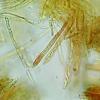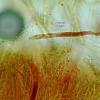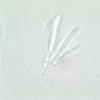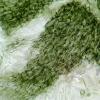
08-11-2025 00:29
 Francois Guay
Francois Guay
I found this species in Quebec, Canada, on herbace

04-11-2025 09:07
Hello.A suspected Hymenoscyphus sprouting on a thi

04-11-2025 12:43
 Edvin Johannesen
Edvin Johannesen
Hi! One more found on old Populus tremula log in O

03-11-2025 21:34
 Edvin Johannesen
Edvin Johannesen
These tiny (0.4-0.5 mm diam.), whitish, short-stip


"Le KOH utilisé est à 5%, je n'ai pas de 3%. Cette différence est-elle cruciale pour la réaction des paraphyses ?"
A high concentration is better, 10% or 20% is much safer.
"Spores hyalines, guttulées aux extrémités : 7,3 - 10,6 X 1,7 - 2,9"
1,7? Can you show a narrow spore like that?
Your find is Mollisia olivaceocinerea (Svrcek). This is a fairly mobile complex that is phylogenetically divided at least into Mollisia oblonga and nodosa. I cannot tell the difference between these two species either by eye or by microscope.
https://asco-sonneberg.de/pages/gallery/mollisia-olivaceocinerea-nodosa-221031-iw171-stma2094-dsm115799-mcol-01jj42346.php?group_id=42343&position=215
Greetings
Ingo Wagner

Dead spores are much narrower than vital ones.
You've just shown the best example.
Here is another example. Look at the spores top right:
https://asco-sonneberg.de/pages/gallery/sporenvolumen-vital-tot42484.php
Greetings
Ingo Wagner













